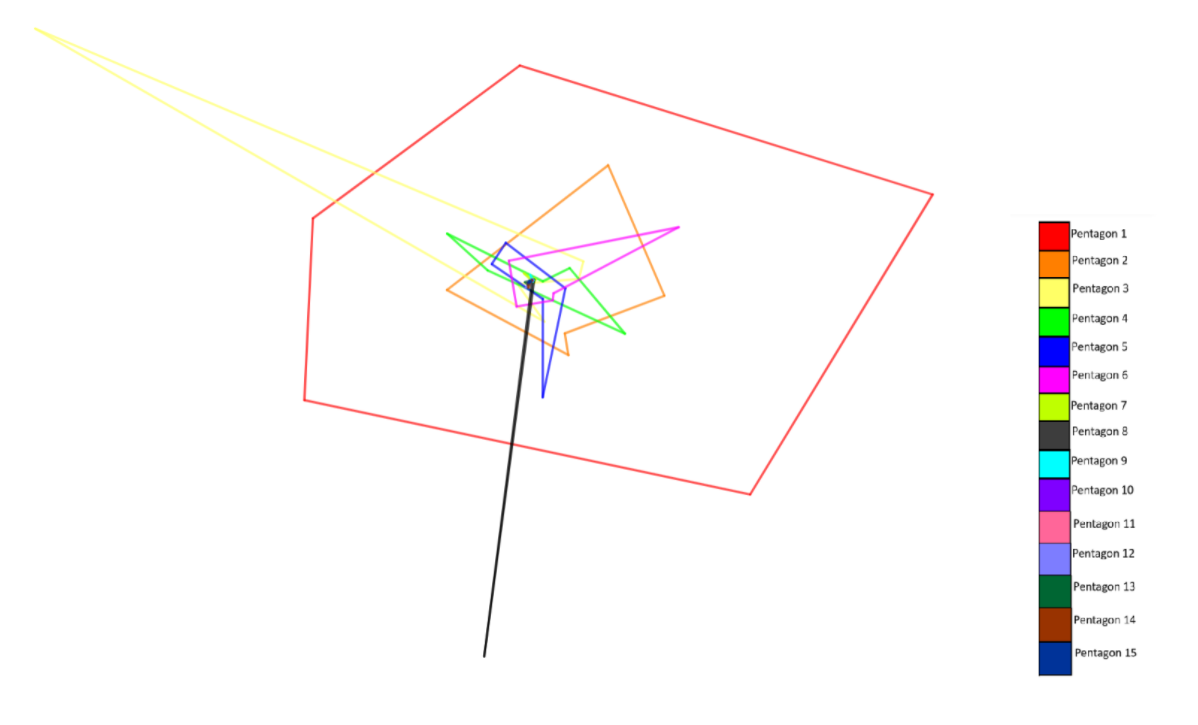I asked this question on MSE here.
Given a non-regular pentagon $A_1B_1C_1D_1E_1$ with no two adjacent angle having a sum of 360 degrees. , from the pentagon $A_nB_nC_nD_nE_n$ construct the pentagon $A_{n+1}B_{n+1}C_{n+1}D_{n+1}E_{n+1}$ as follows:
- $A_{n+1}$ is the intersection between the angle bisector of $\angle C_n $ and $\angle D_n$.
- $B_{n+1}$ is the intersection between the angle bisector of $\angle D_n$ and $\angle E_n$.
- $C_{n+1}$ is the intersection between the angle bisector of $\angle E_n$ and $\angle A_n$.
- $D_{n+1}$ is the intersection between the angle bisector of $\angle A_n$ and $\angle B_n$.
- $E_{n+1}$ is the intersection between the angle bisector of $\angle B_n$ and $\angle C_n$.
(the two opposite angles)
The reason why I chose this construction is that the point $A_{n+1}$ is the only point that doesn't depend on $A_n$. I am allowing self-intersecting polygons in this constructions.
My question is if this process is repeated indefinitely would the sequences ${A_n}$ , ${B_n}$ , ${C_n}$ , $D_n $ and $E_n$ converge ?
There are only four possible scenarios:
- The points will converge.
- The points will eventually trapped on a loop.
- The points will diverge completely.
- Two or more points coincide, or two adjacent angle have a sum of 360 degrees ending the sequence.
I tried to draw the first few pentagons to see if the point will converge or not.
Here is the first 50 pentagons in a zoom-in animation:

I conjecture that the sequences converge to a single point for all non-regular pentagons. If convergence occurs, how can we determine the limit point based on the initial pentagon?
Here is a Geogebra file that have the first 50 pentagons.


